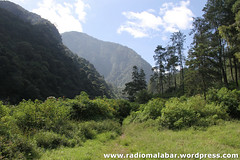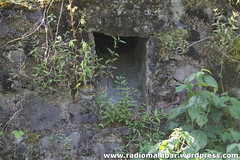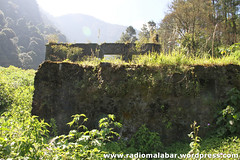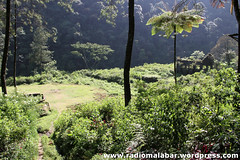Image-Based Search Using Google
It has been around for quite some time. Yet, I am surprised to find that some people just knew it when I showed this cool thing from Google. If using Internet is your daily regime, then searching thru Google might be part of your routine. It’s by entering something that you type and seconds later you might be presented with hundred, thousand, or even million of results. You can refine the search by focusing it in certain domain using “site:[domain-name]”, locating the keywords in some well-known documents using “filetype:[file-extension]” or “ext:[file-extension]”, et cetera. Now it’s not only by entering text, but also by dragging in an image.
Actually, this is all about finding an image (or digital picture if you will). It is not finding an image based on texts as keywords, rather it’s using a certain image as a comparison. Why would you want to find an image using an image ? Let’s imagine that you have a small-cropped picture of a face and you wonder what is on the background. There’s only small chance to nothing that you would find the original picture using text in Google. Using search-by-image, you can try to find the uncropped picture using that cropped one.
First off, open Google, click the Image page, and click the small camera icon in the search row. You’ll find this :
Now, I suppose the next thing to do might just well be self-explained. If you find the part of the image in a certain URL, copy and paste it to the search row. Then search. If you want to use an image in your computer, “Upload an image” is the choice. Alternately, you can drag and release it to the box. There you go, Google would then display some images that MIGHT have similarities with the one as the input. Try to find the biggest resolution possible and suspect that it could be the original source. The other ones could be a resample / downgrade size of it.
I have come to find this very useful. There could be other creative uses of this, but here are some practical ones :
-
Making sure that profile picture used by a stranger in social media is really of his / her own. It’s not always that obvious trickery that somebody uses, let’s say, Brad Pitt’s pics. You know, sometime it’s less known, but you could suspect that it might not be the real one.
-
When it comes to the question of originality. My getting around with some web designers has let me know that they tend to pick images from Internet and treat them as free stock pictures. The way I see it, it’s not always the case. Somewhere we have been warned that “Images may be subject to copyright.” So, when you’re the one who gave the job, make sure any images in the design is safe from any possible claim, or at least they’re free.
-
Telling a scam site is a scam site. A friend asked me how I could know if marindiamondshop.com is a fake web-store, waiting to nail some naive clickers out there. It’s as your a-b-c. I identified some picture with people in it, then try this image search. Next thing, question your self; would a stock picture used by some websites be a picture of somebody who put a testimony ? This is the screen shot :
 Before it was changed, I spotted one of the above picture was that cute police woman: Briptu Eka. Who would believe ‘her’ ?
Before it was changed, I spotted one of the above picture was that cute police woman: Briptu Eka. Who would believe ‘her’ ? -
Verifying if it’s a mash-up pix. What I mean is like when you find this particular picture of your most faved celeb and then you change your mind; stop worshipping her because she is naked, or even pictured in a naughty position. Crop the face, do the image search. Chances are .. well it might be a real one 🙂 but then it COULD be the job of some creative digital artist with nasty mind.
I imagine, would it be the day when, for example, I happen to know nothing about somebody, then I take his / her picture using tele-lens; I crop the face, drag it to Google Image Search, and then I am sooo lucky that I stumble into his / her social media profile ? I contact him / her, say hello, and some chit-chats. For one or two weeks then at the right time the right place, I ask him / her to see each other. It’s part of the future of the ever-narrowing social space, induced from the virtual world! However, this has to wait for some improvements in the image recognition algorythm. Last but not least, the time that will prove this technology is not prone to any creative evil uses.
Until then, I keep thinking of any positive ways of exploring it.
Posted on 14/02/2012, in Computer / Internet and tagged google, image-based, searching. Bookmark the permalink. 1 Comment.












Its good as your other posts : D, thanks for putting up.